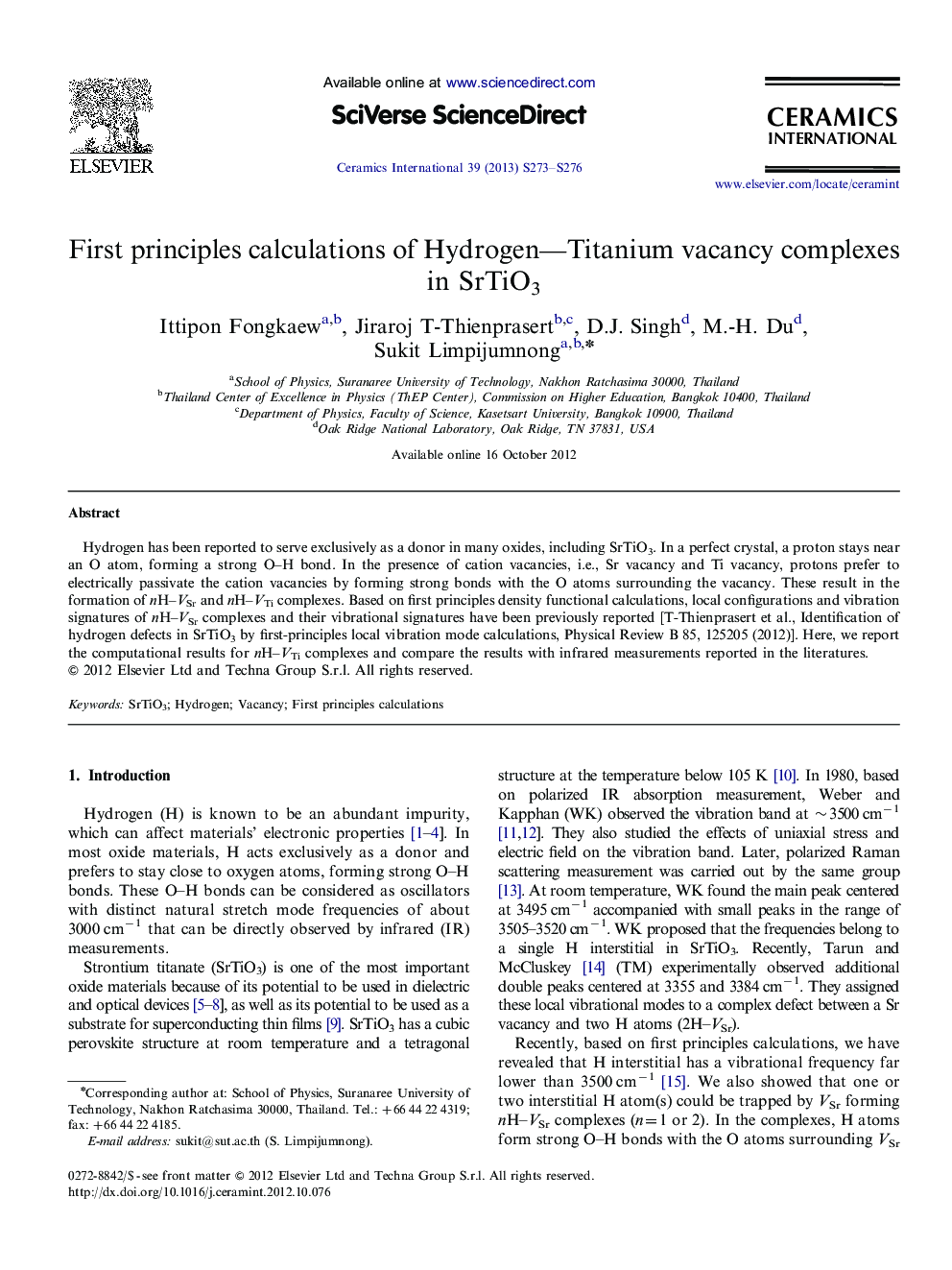| Article ID | Journal | Published Year | Pages | File Type |
|---|---|---|---|---|
| 1461654 | Ceramics International | 2013 | 4 Pages |
Hydrogen has been reported to serve exclusively as a donor in many oxides, including SrTiO3. In a perfect crystal, a proton stays near an O atom, forming a strong O–H bond. In the presence of cation vacancies, i.e., Sr vacancy and Ti vacancy, protons prefer to electrically passivate the cation vacancies by forming strong bonds with the O atoms surrounding the vacancy. These result in the formation of nH–VSr and nH–VTi complexes. Based on first principles density functional calculations, local configurations and vibration signatures of nH–VSr complexes and their vibrational signatures have been previously reported [T-Thienprasert et al., Identification of hydrogen defects in SrTiO3 by first-principles local vibration mode calculations, Physical Review B 85, 125205 (2012)]. Here, we report the computational results for nH–VTi complexes and compare the results with infrared measurements reported in the literatures.
